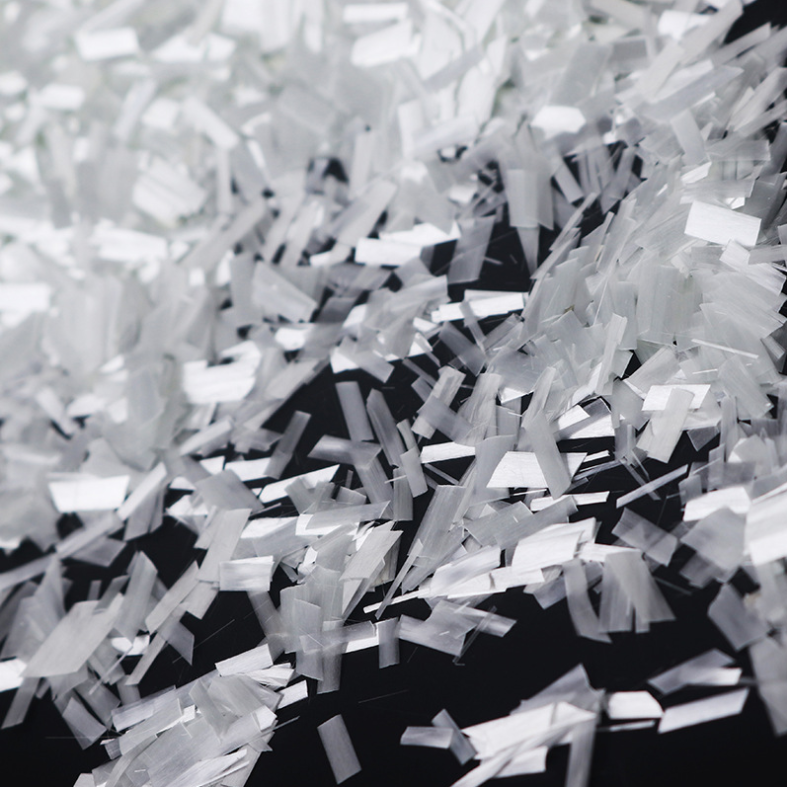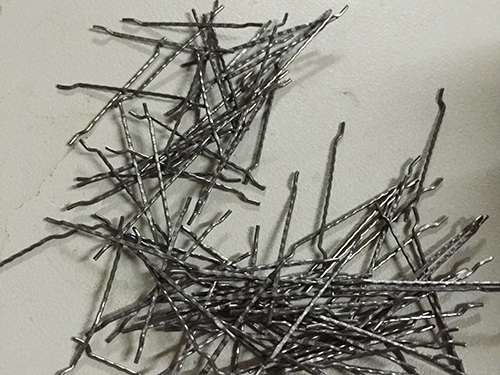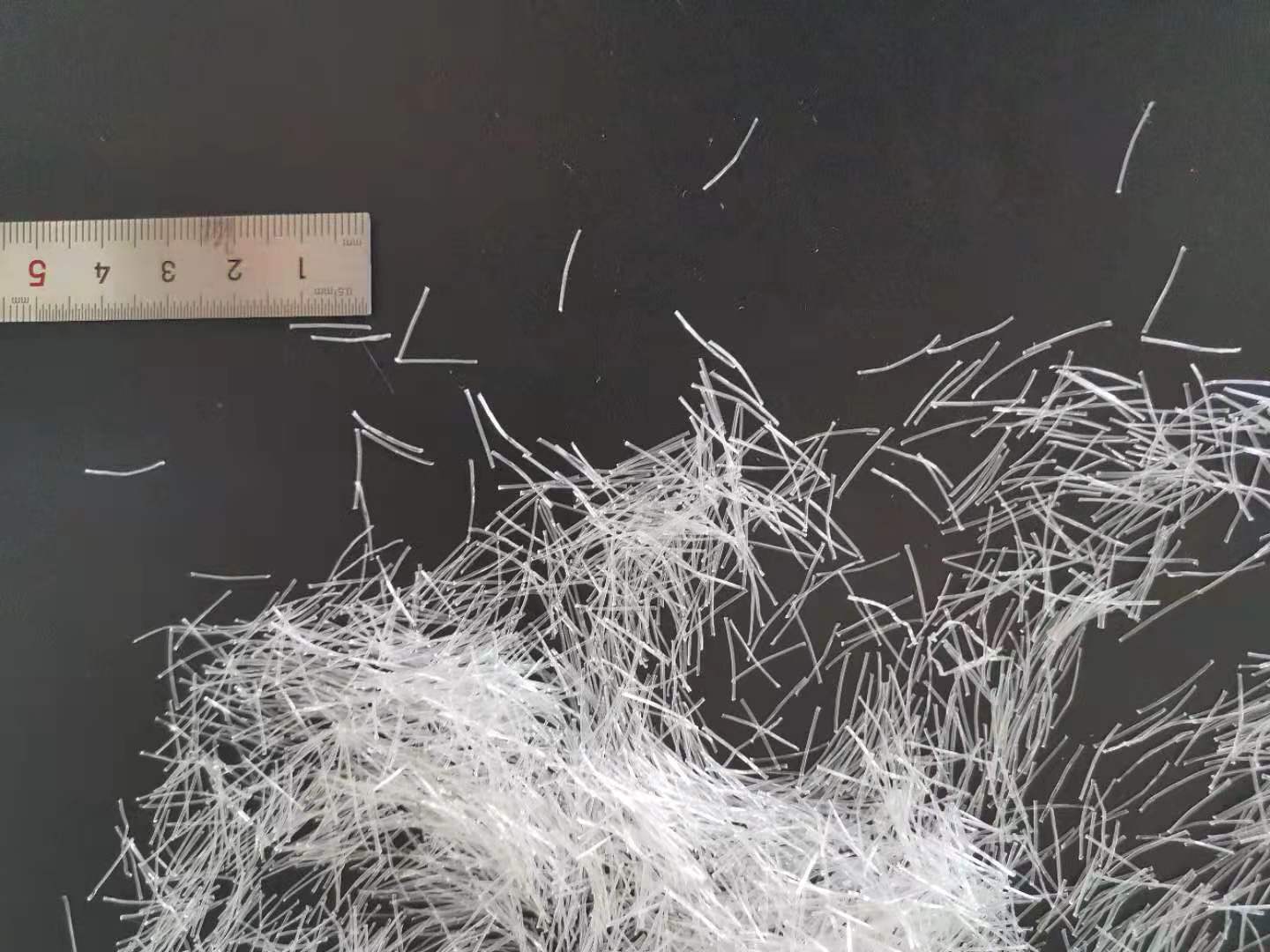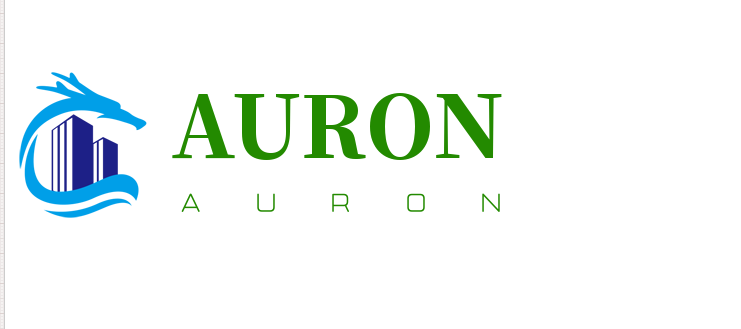Performance and application of polypropylene fiber concrete
Date:2021-04-06 09:57:47 Author:小编 Click:
The ordinary polypropylene fiber has poor aging resistance and is easy to agglomerate in concrete mixing. Only the modified fiber can work with cement substrate and be applied in concrete engineering. In the early stage, polypropylene membrane cracking fiber was mostly used. In the early 1980s, the United States successfully developed monofilament polypropylene fiber. Due to its low cost and remarkable effect on improving concrete performance, it is widely used in underground engineering waterproof, industrial and civil building roof, ground, highway and bridge engineering. Since the mid-1990s, polypropylene fiber reinforced concrete has been used in thousands of projects in China, such as Guangzhou New China building, Chongqing World Trade Center, Beijing Asian Games Village, Wuhan Yangtze River Bridge, Three Gorges project, etc.
Characteristics of polypropylene fiber reinforced concrete
The ultimate tensile rate of concrete is low, generally 0.01% - 0.20%, while the tensile rate of polypropylene fiber is as high as 15% - 18%. The polypropylene monofilament fiber evenly distributed in the concrete can not only prevent the sinking of aggregate, improve workability and bleeding, reduce segregation, but also effectively bear the tensile strain caused by concrete shrinkage, delay or prevent micro cracks and surface macro cracks in concrete Observe the occurrence and development of cracks and improve the impermeability of concrete. When the concrete is subjected to load and carbonation, it can improve the impact resistance of concrete.
1.1 physical properties
1) Anti shrinkage and anti shrinkage is the most important performance of
polypropylene fiber used in concrete. Some data show that the shrinkage of concrete can be reduced by about 75% by adding polypropylene membrane crack fiber with volume ratio of about 1%.
2) According to the test results of the national building materials testing center, the impermeability of 0.05% polypropylene fiber reinforced concrete under 1.2MPa water pressure is 70% higher than that of the same strength (28d age).
3) The recent fire resistance test shows that adding low melting point fiber (diameter 0.1 mm, length 12 cm, dosage 4 kg / m3) into concrete has a good fire resistance prospect. After standard fire resistance test, the damage of such fiber reinforced concrete column can hardly be observed, which indicates that low melting point fiber can prevent concrete from bursting.
1.2 mechanical properties
1) The compressive and tensile strength of polypropylene fiber reinforced concrete is close to that of ordinary concrete.
2) The flexural strength of mortar or concrete can not be increased by more than 25% when polypropylene membrane crack fiber with volume ratio of about 1% is added, but it has high deformation ability before failure.
3) The test results of national building materials test center show that the impact strength of mortar with 0.05% and 0.1% fiber is 17.7% and 25.8% higher than that of plain mortar.
4) After 2 million cycles, the maximum stress that plain concrete can bear is 50% of its flexural strength, and the maximum stress of 0.3% fiber concrete is 65% of its flexural strength.
1.3 durability
1) According to GBJ 82-1985, the frost resistance of polypropylene fiber reinforced concrete with two volume ratios was tested by GBJ 82-1985. The specimen size was 100 × 100 × 100 mm, and the age was 28 days. Taking the area with the coldest monthly average temperature of - 5 ~ 0 ℃ as an example, the frost resistance grade was 100-50. The change rate of concrete hardening compressive strength after 50 freeze-thaw cycles was observed. The test results show that adding polypropylene fiber concrete can effectively improve the frost resistance of concrete.
2) The anti carbonation and anti alkali aggregate reactivity of polypropylene fiber concrete is mainly achieved by reducing various cracks in the concrete to improve the density of concrete.
4) Mixing polypropylene fiber with volume ratio of 0.05% ~ 0.07% can effectively restrain the segregation and bleeding of concrete mixture, and improve the workability of concrete.
Application of polypropylene fiber concrete
2.1 construction works
Polypropylene fiber concrete is used for pouring self waterproof concrete such as basement floor, side wall, roof, roof, pool, etc., and super wide, super thick and super large concrete components such as mass concrete of high-rise building foundation and beam slab of transfer floor. The workability of concrete is good, and it helps to improve the impermeability, crack prevention and frost resistance of self waterproof concrete, and effectively solve the cracks caused by temperature stress in mass concrete.
2.2 civil and hydraulic engineering
The comprehensive performance of concrete pavement, bridge slab, reservoir dam, harbor and aqueduct mixed with polypropylene fiber is better than that of ordinary concrete engineering, such as bending resistance, crack resistance, fatigue resistance, wear resistance, seawater erosion resistance and other indicators. Especially under the conditions of large traffic volume and frequent vehicle traffic, the fatigue resistance of polypropylene fiber is more prominent Under the condition of severe and frequent freeze-thaw, the freeze-thaw resistance of polypropylene fiber reinforced concrete can be fully reflected.
2.3 precast concrete products
Polypropylene fiber reinforced concrete is used in reinforced concrete precast components. Cement products (pipes, blocks, etc.) can significantly improve the appearance quality, help to prevent and reduce surface cracks, reduce missing edges and corners, increase its impermeability and prevent reinforcement corrosion.
2.4 ready mixed concrete
The ready mixed concrete mixed with polypropylene fiber can obviously improve the workability of concrete, reduce bleeding and prevent plastic cracks of commercial concrete. Polypropylene fiber can be mixed with any chemical admixture to make pumping and other high performance concrete in concrete. High performance concrete (HPC) is widely used in high-rise buildings and long-span bridges due to its high strength, large fluidity and excellent durability. The toughness, crack resistance and ductility of high performance concrete can be effectively improved by using polypropylene fiber composite.
3 application examples
Application of 3.1 in transfer floor structure of high-rise building
Jinan Dongxing commercial and residential building is a double tower building with large chassis, with a total construction area of 88755m2, a height of 99.9m (111.7m at the highest point), 3 floors underground and 30 floors above ground. The first to fourth floors above the ground are commercial buildings, the fifth to the 30th floors above the ground are residential buildings. The fourth floor is the transfer floor. The girder section sizes of transfer floor are 950mm × 2500mm, 1000mm × 2500mm and 1150mm × 2800mm. The thickness of cast-in-place floor of transfer floor is 150 mm. The transfer floor is made of C50 high-strength concrete. The construction time of transfer floor is early August 2001.
High strength concrete has the defects of high brittleness under compression and large area cracking of large volume high strength concrete, which makes the advantages of high strength concrete not fully play. Therefore, the superior selection of anti cracking scheme is made. Finally, it is decided to add modified polypropylene fiber (length 15-19mm, tensile strength 580-780mpa, elastic modulus 370mpa and so on) into C50 high-strength concrete of transfer layer NF-2 superplasticizer, 0.9kg polypropylene fiber is added into every 1m3 concrete. In this project, the concrete quality of the transfer layer is excellent, no visible cracks are found, and the 28d compressive strength is 56.7mpa, which shows that it is an effective way to control the concrete cracks of deep beams and large-area floor slabs by adding polypropylene fiber appropriately.
Application of 3.2 in concrete pavement engineering
Yaomeng section of Pingdingshan Pingdong line, with a pavement width of 12M, belongs to the cross street section of plant area and villages and towns. The original asphalt pavement was damaged seriously due to the heavy traffic volume and heavy overload. Although it has been repaired for many times, the effect has not been fundamentally improved, and the social impact is great. Therefore, Pingdingshan Highway Bureau decided to overhaul the pavement in 2001. A 200m long polypropylene fiber concrete pavement with a width of 9m was laid in the Bailou section near the urban area, The construction is divided into two sections, each of which is 100 mm long. One section is made of fully mixed fiber concrete, and the thickness of the pavement is reduced to 18 cm. The other section is made of plain concrete and fiber concrete. The total thickness of the pavement is 24cm, and the surface layer is 8cm mixed with polypropylene fiber. The lower layer is still made of ordinary cement concrete. The polypropylene fiber is made by American fiber network company. The fiber length is 1.8cm 0.9kg finished polypropylene fiber is added into every 1m3 of concrete. Through the investigation and analysis of the two-year traffic test of the test road, there is no obvious broken slab, crack, staggered platform and other phenomena, and the use effect is good. Although the cost of using fiber reinforced concrete is higher than that of ordinary concrete, it is relatively short in curing period, long in service life, greatly reduced in maintenance workload, and convenient for driving. Compared with reinforced concrete pavement, the cost is saved by 280000 yuan per kilometer. Generally speaking, the use of fiber reinforced concrete can obtain better economic and social benefits.
Conclusion
The comprehensive performance of
polypropylene fiber concrete is better than that of ordinary concrete. It has the characteristics of simple construction method, safety and harmless, and reliable quality performance. It is especially suitable for rigid waterproof concrete, mass concrete and high strength concrete, with obvious technical and economic advantages. Because the initial cost of polypropylene fiber is slightly higher, it is only used in key projects and key parts of special projects. With the gradual localization of polypropylene monofilament fiber and the continuous progress of construction technology, it will be more and more widely used in water conservancy, industrial and civil buildings, roads and bridges.








